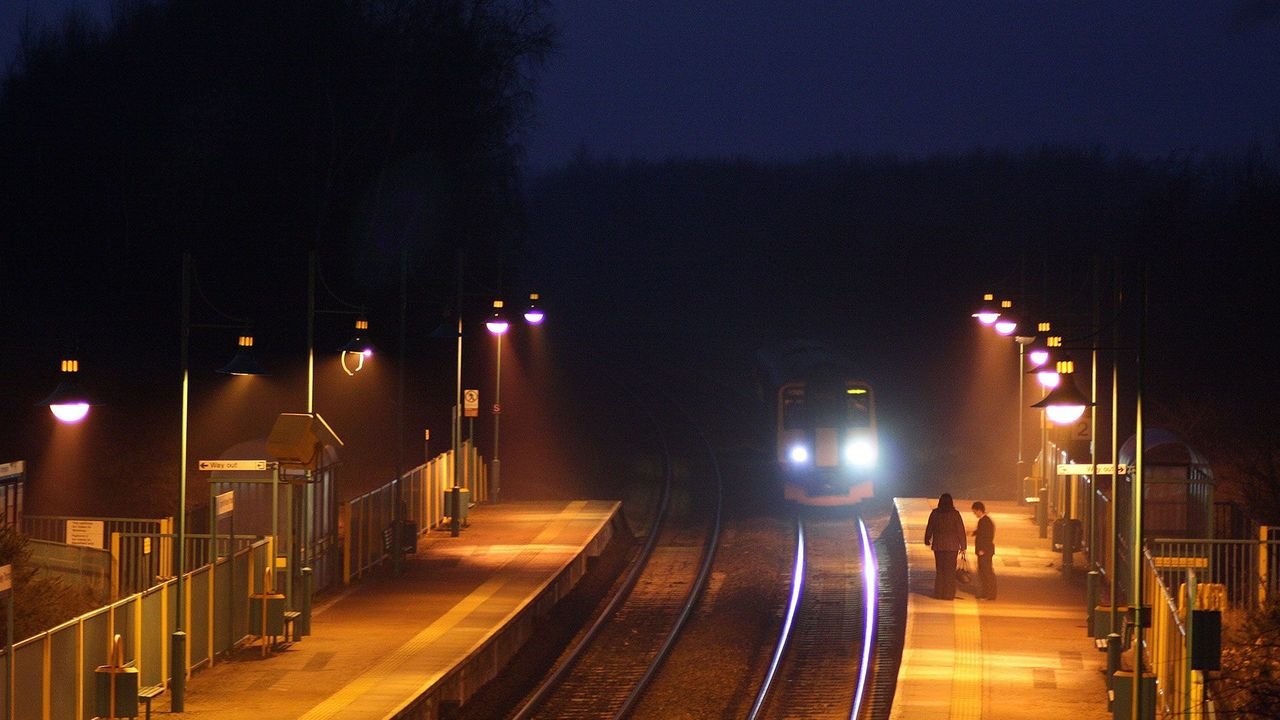Throughout history, railroads have been integral to the development of nations, cities, and industries. They were once the lifeblood of commerce and the fastest way to travel. However, over time, many of these railroads have been abandoned, left to the ravages of nature and time. These ghost railroads—abandoned lines, stations, and tunnels—carry with them stories of prosperity, decline, and mystery. Some are just forgotten remnants of the past, while others are steeped in local legends and ghostly tales.
In this article, we will delve into the world of ghost railroads, exploring the reasons behind their abandonment and the stories that continue to haunt them.
What Are Ghost Railroads?
A ghost railroad refers to a railway line that is no longer in use. The term is often associated with abandoned tracks, stations, and equipment that have been left behind. These railways were once bustling hubs of activity, but for various reasons—economic decline, changes in transportation technology, or the rise of automobiles—they fell into disuse.
Ghost railroads can be found all over the world, and many have fascinating histories tied to the economic and industrial growth of their regions. Once vital routes for trade, transport, and military movements, these abandoned lines now sit quietly, awaiting rediscovery by explorers, historians, and ghost hunters alike.
Reasons Behind the Abandonment of Railroads
The abandonment of railroads is a complex phenomenon that often involves several factors. While some lines were closed due to economic shifts, others were left behind as industries that once relied on rail transportation faded away. Here are some of the most common reasons for the decline of railroads:
1. Economic Shifts and Decline
Many railroads were abandoned because they could no longer sustain the costs of operation. As industries evolved, trucking and automobile transport became more popular, cheaper, and more efficient. The expansion of highways and the automobile boom in the mid-20th century played a huge role in the decline of railroads. With roads becoming more reliable for freight and passenger transport, rail lines lost their competitive edge.
2. Technological Changes
With the advent of air travel and modern transportation technologies, many railroads became obsolete. High-speed trains, more advanced engines, and streamlined routes made it easier to travel by rail, but it was often too late for older lines to adapt.
3. Competition from Other Modes of Transportation
Trucks, buses, and automobiles provided more flexibility than trains. The ability to travel door-to-door and the rise of freight trucks meant that railroads struggled to keep up with the competition. This resulted in the abandonment of unprofitable lines that couldn’t justify the cost of maintaining infrastructure.

Famous Ghost Railroads Around the World
Ghost railroads are scattered across continents, often hidden in plain sight. Here are a few well-known ghost railroads that continue to captivate explorers and history buffs alike:
1. The Old Halesworth Railway (England)
The Old Halesworth Railway, once connecting Halesworth to the larger East Suffolk line, was abandoned in the 1960s. The tracks and stations have long since fallen into disrepair, but remnants of the railway still exist in the English countryside. The railway is not only a fascinating historical site but also a place of local legend. Many say that the area is haunted, with reports of strange sounds and sightings near the old tracks and abandoned station.
2. The Abandoned Trans-Siberian Railway (Russia)
The Trans-Siberian Railway is one of the most famous railways in the world, stretching over 9,000 kilometers across Russia. However, there are sections of the railway that are no longer in use, particularly those running through remote parts of Siberia. Some of these abandoned lines are now part of the ghost railroad phenomenon. The cold, isolated landscapes have sparked rumors of hauntings and mysterious occurrences, making these parts of the railway a popular subject for ghost hunters.
3. The Kangchenjunga Railway (India/Nepal)
In the early 20th century, the Kangchenjunga Railway was a proposed railway project to connect the Indian subcontinent with Nepal. However, due to difficult terrain and funding issues, the project was never completed. Today, remnants of the railway, including abandoned stations and incomplete tracks, still exist in the Himalayas. These ghost railroads are a stark reminder of the ambitious plans that never came to fruition.
4. The Erie Lackawanna Railway (United States)
Once a thriving network in the Northeastern United States, the Erie Lackawanna Railway connected major cities like New York, Chicago, and Cleveland. However, due to economic decline and the rise of trucks and airplanes, many of the railway lines were abandoned in the mid-20th century. Some parts of the Erie Lackawanna Railway are still intact, and the abandoned stations are popular among urban explorers and railroad enthusiasts.
5. The San Juan Line (New Mexico, United States)
The San Juan Line, which ran through New Mexico and Colorado, was a significant route for transporting coal, lumber, and passengers. In the 1970s, the line was abandoned, leaving behind ghost stations and overgrown tracks. The isolated desert landscape surrounding the railway is a popular location for ghost tours and folklore about the spirits of past train passengers who continue to roam the tracks.
The Haunting Mystique of Ghost Railroads
Aside from their historical significance, ghost railroads have taken on a mystical quality. Many ghost railroads are believed to be haunted, with locals and adventurers reporting strange occurrences, phantom train sounds, and sightings of figures in old-fashioned clothing. The eerie nature of these abandoned lines, coupled with the romanticism of trains and travel, has made them subjects of fascination for both paranormal enthusiasts and historians.
One of the most common ghost stories associated with abandoned railways is the phantom train—a spectral train that can be heard rumbling down forgotten tracks in the dead of night, though no train is actually present. Some ghost railroads have been featured in local folklore, where the souls of past workers or passengers are said to haunt the tracks.
Exploring Ghost Railroads Today
Despite their abandonment, ghost railroads continue to attract a growing number of explorers, photographers, and historians. These abandoned lines offer a unique glimpse into the past, preserving the legacy of a bygone era. Many modern adventurers visit these ghostly locations, documenting their findings and uncovering forgotten histories.
For those interested in visiting ghost railroads, safety is key. Many abandoned lines are located in remote or rugged areas, and the tracks may be unstable or difficult to access. It’s important to plan your visit carefully and, where possible, go with a guide who is familiar with the area.
Conclusion
Ghost railroads offer a fascinating look into the past, blending history, mystery, and the enduring legacy of rail travel. Whether you’re a history enthusiast, an explorer, or a lover of ghost stories, these abandoned lines are a unique way to connect with the past. From the eerie sounds of phantom trains to the remnants of once-thriving stations, ghost railroads continue to captivate and inspire people around the world.
As more people seek to uncover the stories hidden along these forgotten tracks, the allure of ghost railroads will continue to grow, preserving their history and their mysteries for future generations to explore.




